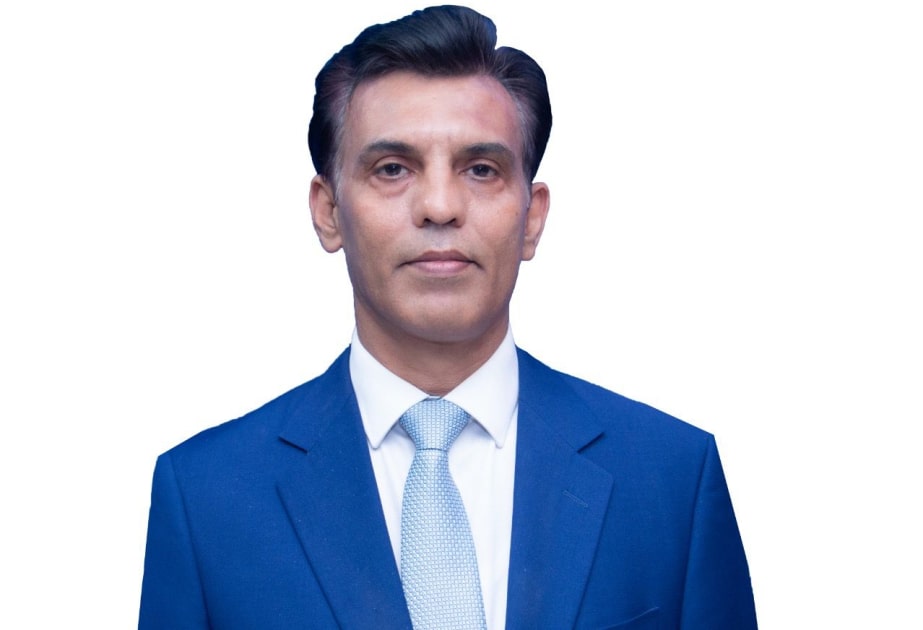Abid Qaiyum Suleri, Pakistani scholar who serves on the COP29 International Advisory Committee and the advisory council of the Asian Development Bank Institute, shared his insights with the Azerbaijan State News Agency (AZERTAC) on Azerbaijan’s hosting of the 29th session of the Conference of the Parties (COP29) to the United Nations Framework Convention on Climate Change, which will play a critical role in facilitating the country’s transition to green energy, as well as achieving the goals of renewable energy development.
AZERTAC presents the interview:
Today, the 29th session of the Conference of the Parties to the UN Framework Convention on Climate Change (COP29) is taking place in Baku, which is considered one of the largest and most prestigious events in the world. How do you assess the importance of this conference for countries in the transition to a green economy?
COP29 offers a vital opportunity to shift from vulnerability to resilience, setting the foundation for a sustainable and equitable future. Historically, there have been certain defining moments that have shaped societies, steering them toward progress or decline. Today, humanity faces one such moment. COP29 is more than a climate conference; it is a forum for critical choices that could lead to a resilient world or, if mishandled, deepen existing fragilities.
For countries like Pakistan, COP29 is more than just a stage for advocacy. It is an opportunity to emphasize specific needs, from increased climate finance to technical support for renewable energy. With uncertainty around the US role, Pakistan and other climate-vulnerable nations must champion predictable, reliable financing mechanisms that can withstand political shifts and ensure consistent support for sustainable development. The choices made at COP29 will shape global resilience for years to come. The decisions taken here will determine whether resilience becomes the cornerstone of our future or if we remain vulnerable to political and environmental instability.
Do you think COP29 will be able to solve the financial problems?
COP29 is also being called as ”Finance COP”. It becomes increasingly clear that climate finance is indeed the linchpin of meaningful global climate action. Money—who pays, how much, and with what terms—continues to dictate whether climate ambitions can translate into real, measurable progress. The urgency for a new collective quantified goal (NCQG) has never been greater. A target of $1 trillion per year is not just ambitious; it’s an essential benchmark to meet the rising costs of mitigation, adaptation, and resilience, especially in developing countries already facing the brunt of climate impacts. Yet beyond the numbers, the call is for finance that doesn’t saddle vulnerable countries with debt but provides resources on favorable terms. drawing attention to the importance of grants over loans and the creation of a “grant equivalence” framework to ensure that funds reflect the true value delivered to recipient nations. Ideas like reallocating Special Drawing Rights, issuing new SDRs, adjusting equity-to-loan ratios for multilateral banks, and redirecting fossil fuel subsidies toward climate initiatives are innovative, yet require the political will of the developed.
Is the green transformation possible at the global level?
Yes and no. Yes, because, we don’t have any other choice. There is no planet “B” if we want the planet Earth to carry on supporting the life, not only of us homo sapiens but all living organisms, then we will have to heal mother nature, and reduce its temperature by green transformation. With the next round of Nationally Determined Contributions (NDCs) due by early 2025, COP29 is a stage for countries to showcase or preview their climate ambitions for a green transformation. These NDCs represent a last-ditch effort to keep the 1.5°C target within reach, but their success depends heavily on available finance. Without robust support from the NCQG, many developing nations may lack the resources to set or achieve ambitious goals. The interdependence of financial support and climate commitments is straight forward; without adequate funding, climate action plans (green transformation plans) from poorer nations could falter.
What important achievements have been achieved at COP29 so far?
More than one funding instruments are being discussed in COP29. A significant breakthrough at COP29 has been the progress on Article 6 of the Paris Agreement. Negotiators have ratified a framework under Article 6.4, setting up a U.N.-supervised carbon market that will allow countries to trade verified emission reductions. The framework’s emphasis on transparency, environmental integrity, and avoiding double counting aims to build confidence in carbon markets after years of deadlock. However, the risk of “junk credits”—carbon offsets that fail to deliver real emission reductions—remains a concern. Without rigorous safeguards, there is a danger that carbon markets could become a convenient loophole for wealthier countries to offset emissions rather than cut them. For carbon markets to fulfill their promise, COP29 must ensure that these credits are genuinely effective, equitable, and aligned with broader climate goals.
One of Azerbaijan’s main goals at COP29 was to promote the implementation of the Fund for Responding to Loss and Damage established at COP27 in Sharm el-Sheikh. At COP29, an agreement was signed with the Philippine government to transfer the management of the fund to them. How do you assess these successes?
From the developing world’s perspective in general, and Pakistan’s perspective in particular (being the country that played the winning short in getting this fund announced during COP27) the operationalization of the Fund for Responding to Loss and Damage (FRLD) remains crucial. While FRLD’s governance structure, separate from the World Bank’s usual oversight, is a win for low-income countries seeking independence, critical questions remain unanswered. Will the fund scale to meet the expected $400 billion in annual needs? Will it incorporate innovative financing approaches to make the resources go further? The answer of most of the procedural questions will be deferred to fund’s next board meeting in Manila. However, at COP29, questions will be raised about whether the fund incorporates innovative financing approaches and whether it can scale to meet the escalating needs of affected countries.
The anticipated withdrawal of the U.S. from Paris Agreement under Donald Trump’s presidency will be a jolt to both climate ambitions and climate finance commitments. However, this is the time when other countries should show their leadership and fill in the vacuum created by departure of the U.S.
What opportunities does Azerbaijan have for transforming the Karabakh territories into a green energy zone?
Azerbaijan is determined to play a catalytic role in world’ green transformation. The punchline of COP29, “In solidarity for a green world” says it all. Azerbaijan government has great opportunity to convert the liberated areas into green zone and lead for example. Pakistan has been a great supporter of Azerbaijan in this regard and we are looking forward to see the green miracle that Azerbaijan government will bring to the liberated territories.
The world is dependent on fossil fuels and cannot switch overnight to renewables. While oil and gas are here to stay for short to medium-term, the transition to greener fuels is rapidly taking place, mainly because of our conscious efforts to go green and partly because of new tariffs on exports in the EU and very soon in the U.S. and China on products with higher carbon emission than the country of imports. This will be a carrot and stick for all of us to shift to renewables and Azerbaijan will be following the suit.











